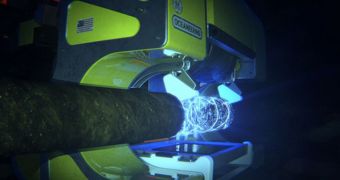Should a group of brainiacs have their way, it might not be long until undersea pipelines find themselves subjected to the same procedures that people who have been unlucky enough to break one limb or another more often than not face.
Not to beat about the bush, it turns out that scientists working with GE Healthcare, GE Oil & Gas, Oceaneering, and BP are now trying to determine whether or not medical X-ray technology can safely be used to keep tabs on pipelines resting at the bottom of seas and oceans.
More precisely, they wish to figure out if said technology can be used to pin down microscopic cracks and signs of corrosion in underwater pipelines, and thus help prevent potential environmental disasters, Green Car Congress tells us.
By the looks of it, X-ray technology has been used to study the makeup of solid structures and mechanical parts in extraordinary detail for several decades now.
The trouble is that using X-rays to have a close look at undersea pipelines is bound to prove a bit of a hassle, simply because transporting these structures to a laboratory is pretty much out of the question.
Besides, whatever equipment one would wish to send to examine them on spot would be subject to high pressure and poor lighting conditions, and therefore likely to fail.
Looking to make it easier to identify cracks and signs of corrosion in pipelines resting below the surface of a given sea or ocean, researchers placed a medical X-ray detector inside a high-tech case especially designed to protect it against seawater and pressure.
The detector was then attached to a deep-sea submersible rig whose job was to latch onto a pipeline and then travel along its body, as detailed in the video below.
As the rig journeyed along the pipeline, the detector snapped images of it, which it later transmitted to researchers.
Until now, this innovative technology to assess the overall condition on underwater pipelines has only been used in a controlled environment, i.e. in the laboratory, at simulated depths of up to 10,000 feet (3,048 meters).
However, the scientists working on this project hope that it will not be long until they manage to switch to testing it in the field, and are confident that they will obtain encouraging results.
“X-rays are giving us an insight. You don’t know something’s wrong and then you see it,” mechanical engineer Karen Southwick commented on the importance of this research project.
“Whether it’s a small spill or a catastrophic one, this is hopefully preventing that. Ideally, we will be able to have data for every pipeline that’s in the water,” she further explained.

 14 DAY TRIAL //
14 DAY TRIAL // 